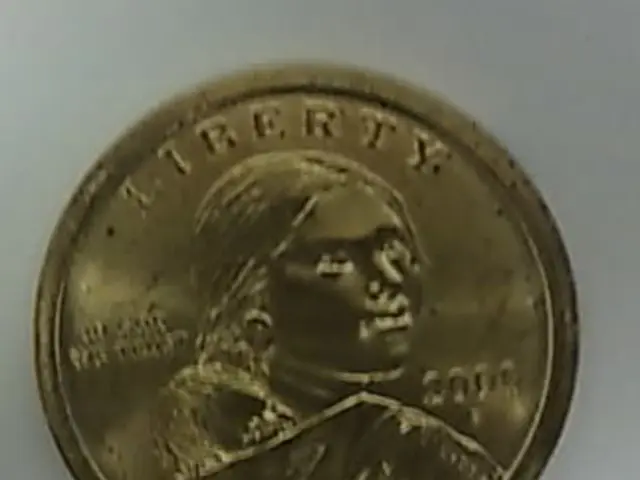"Tesla's Troubles" - From Pioneer to Struggling Giant in Autonomous Driving
Tesla's Innovative Leap Forward Slips into Outdated Trends
Social Media Sharing: Facebook | Twitter | WhatsApp | Email | Print | Copy link
Automotive heavyweight Tesla is facing a rough patch. Electric car sales have taken a nosedive, all while Elon Musk's team is pinning their hopes on self-driving taxis as the next big breakthrough. The issue is, Tesla is no longer a trailblazer when it comes to autonomous driving.
Some background:- Last year, Tesla's sales figures were dismal, missing targets across the global market, including a 50% plunge in European sales.- In May, things didn't improve as Chinese sales also took a hit. The once-dominant player in the market for battery-powered cars, Tesla, is now overtaken by Chinese rival BYD.
Expert Opinion:According to automotive expert Jürgen Pieper, the current sales figures for Tesla are "truly catastrophic." Tesla's loss of market leadership can be attributed to a variety of factors, including increased competition from traditional automakers that have recently become more involved in electric vehicles.
Economic Factors:- Experts are skeptical about whether Tesla can regain market share in the medium term. A potential solution might be the introduction of an affordable, mass-market model aimed at boosting sales, but this would likely compromise profit margins.- The stock market seems immune to these concerns, with Tesla retaining its coveted status as one of the most valuable companies in the world. Investors remain hopeful that Tesla can recapture its past successes in new business sectors, such as self-driving taxis.
The Future of Tesla:In the coming weeks, Tesla is expected to launch its first fleet of robotaxis in Austin, Texas. The autonomous vehicles will be a significant step for Tesla, but their success is far from guaranteed. Competitors such as Waymo and German automakers are also making strides in this emerging market.
Challenges Facing Tesla's Robotaxis:- Tesla's focus on camera technology alone for self-driving capabilities, compared to competitors who use a combination of lidar sensors and radar, could be a disadvantage.- Depending on market safety regulations, Tesla's robotaxis may be limited to specific markets in the United States and Asia.
Economic Implications:To justify its market valuation compared to traditional automakers, Tesla will need to demonstrate significant production numbers of its robotaxis in the coming years, with several hundred thousand units per year being considered a commercial success.
Other Future Opportunities for Tesla:- Besides robotaxis, Musk has mentioned the potential for Tesla to provide artificial intelligence services to other companies.- The humanoid robot Optimus is also expected to hit the market soon, with Musk indicating it could have even greater potential than Tesla's current offerings in the automotive industry.
Source: ntv.de
- Tesla Motors
- Autonomous Driving
- Automaker
- Electric Vehicles
- Elon Musk
Tesla's Challenges in Autonomous Driving:Tesla's struggles in the autonomous driving market stem from a variety of factors. Here are some of the main issues that have contributed to Tesla's difficulties:
- Technical and Safety Concerns: High-profile incidents involving Tesla's Full-Self Driving (FSD) technology and concerns about the readiness and reliability of Tesla's autonomous driving capabilities have raised questions among public and regulators alike.
- Robotaxi Safety: Skepticism exists regarding the safety of Tesla's robotaxis, which will be partially self-driving and assisted by remote human operators.
- Increased Competition: Tesla faces fierce competition from traditional automakers, especially in China. This competition not only exists in the EV space but extends into autonomous driving technology as well.
- Regulatory Challenges: Evolving regulatory landscapes, particularly in key markets like China, pose additional complications for Tesla, as new safety standards and protectionism can impede the adoption of autonomous technologies.
- Operational and Strategic Challenges: Delays in the launch of Tesla's robotaxi service and skepticism about the company's ability to deliver fully autonomous vehicles have cast doubts on its potential success. Additionally, the need to maintain sales volume and resulting pressure on profit margins may limit Tesla's ability to invest heavily in autonomous driving technology.
- To combat the luxury vehicle market saturation and regain profit margins, Tesla could consider investing in vocational training programs for its workforce, specifically focusing on areas like automotive technology and engineering, to foster a skilled and innovative team.
- With the growing interest in autonomous driving and electric vehicles, there lies an opportunity for Tesla to collaborate with financial institutions to facilitate auto loans and leases for their customers in the United States and Europe, thus helping to cater to a broader demographic.
- Tesla, being a pioneer in autonomous driving, could establish partnerships with transportation companies to improve public transportation systems and provide affordable, eco-friendly mobility options to communities, resolving infrastructure issues and reducing traffic congestion.
- As Tesla expands its business ventures and explores new technologies like AI services and humanoid robots, it should prioritize setting up a comprehensive community policy to address ethical concerns, ensure transparency, and maintain privacy protections, as these technologies could have profound implications for the industry, finance, and society as a whole.





